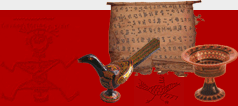|
农村集市:当代彝族文化的新时空场域
Transforming the Periodic Market in Nuosu Society
刘绍华 Liu Shaohua
美国哥伦比亚大学人类学系
Department of Anthropology, Columbia University, USA
【摘要】本文提出凉山彝区的赶场研究有助于了解传统彝族习惯与新经济制度的结合情形。市集原本是主流汉族社会的概念,上世纪80年代中期引入彝族乡村地区,称之为“自由市场”,经过二十年的变化,赶场已改变了当代彝族的日常生活。透过在昭觉县竹核乡的田野研究发现,这种新引入的商业活动,对少数民族的经济理性、空间及时间的观念建构,都产生了质变。当地的生产与消费集中在这十天一场“逢九”的市集里,毕摩和苏尼也在场子提供宗教服务及算命。十天一场,已深深影响了彝族的日常生活作息,赶场日变成近似西方的“周末”,是“情人节”,也是“看医生”或是“买药”,以及“去饭馆吃饭”的日子。人们也选择在赶场日举行小型家支活动或纠纷调解,选择这一天,是因为“大家都会来赶场”,并且赶场日要找到德古或受人尊重的村干部来协调比较容易。近几年来,赶场日也成为当地民间禁毒活动的宣传场子,自竹核成为海洛因和爱滋病的重灾区以后,当地自发的健康教育活动也改编传统的歌舞,利用赶场日人群聚集时进行宣传活动。丰富多样的社会活动,对竹核甚至其它凉山彝乡而言,赶场在乡民的日常生活中已建构出社会空间及时间上的新意义。
关键词: 农村集市 传统转型 文化建构
Abstract
This paper proposes that the study of the periodic market
is illustrative of a creative syncretism of indigenous practices
with the new economic institution among the Nuosu people
in their contemporary daily life. My field research in Zhuhe
Township explores how these newly introduced commercial
activities since the middle of the 1980s have led to qualitative
changes in this minority community in terms of their economic
rationality, as well as their spatial and temporal constructs.
For every ten days in a calendar month, tens of hundreds
of local people converge in the periodic market in Zhuhe,
a Nuosu predominant township of Zhaojue County in Liangshan
Prefecture. This market follows the ten day cycles of the
9th, 19th, and 29th of each month. Demands and supplies
of agricultural products and merchandise are concentrated
on the market day. The market day has become something akin
to the ‘weekends’ in the West, in every ten days in this
agrarian community. The market days are practiced as the
’lover’s days,’ ‘doctor-seeing’ or ‘medicine-buying’ days,
and the ‘restaurant eat-out’ days. A few Bimos and Sunis,
or religious specialists, also purvey fortunetelling service
in the market. Periodic markets have become social arenas
for events with clearly marked cultural bearings rather
than just commercial activities. It is not infrequent to
see small-scale clan meetings and dispute resolutions-mediation
meetings on market days. People choose the market day as
the day of holding these social events because ‘everybody
comes to the market’ and it is easier to find a traditional
judge, ndeggu, or a knowledgeable and respectable person
such as a village cadre for dispute mediation or conflict
resolution. Recently, periodic markets have also been used
as a venue of promoting local anti-drug efforts. Organizers
of these health related campaigns often adapted Nuosu dances
and songs as the rallying themes to attract the audiences
in the market since the two epidemics of heroin and HIV/AIDS
hit this impoverished township. In this sense, the periodic
markets have constructed new meanings of social space and
time in Nuosu everyday life in Zhuhe and beyond.
Keywords: Periodic Markets─Transforming Tradition─Cultural
Constructs
作者简介:
刘绍华,台湾清华大学社会人类学研究所硕士,美国哥伦比亚大学医学人类学博士候选人。目前于凉山州昭觉县竹核乡进行博士论文的田野研究,主题为医疗现代化与彝族传统文化的整合过程。主要学术作品,《医学人类学的中国想象》(广西民族学院学报,年底出刊)、《当代用语百科全书》社会运动及族群关系篇(台湾书泉出版社,1996年)、《去殖民与主体重建:以三份台湾原住民文化刊物为例》(台湾清华大学社会人类学研究所硕士论文,1994年)。主要经历,台湾国际发展合作基金会「非洲地区医疗援助计划」评估人(2000年),台北海外和平服务团驻柬埔寨工作站计划负责人(1998-2000年)。
About the Author:
Liu Shaohua, M.A. in Social Anthropology, Department of
Sociology and Anthropology, Tsinghua University, Taiwan,
1994. Ph.D. Candidate in Medical Anthropology, Department
of Sociomedical Sciences, Columbia University, 2004~ .Work:
(Dec. 2005) “Medical Anthropology in China.” Journal of
Guangxi University for Nationalities (Philosophy and Social
science). China. 1996 Co-author of Contemporary Encyclopedia,
Glossaries of Social Movements and Ethnic Relation, Shu-Chuan
Publishing Ltd, Taiwan. 1994 Decolonization and Reconstruction
of the Subject: On the Cultural Movement of Taiwanese Aborigines.
Master thesis. Institute of Sociology and Anthropology,
Tsinghua University, Taiwan. EXPERIENCE: Program Evaluator,
four medical aid programs to African countries, International
Cooperation and Development Fund, Taiwan, 2000. Program
Coordinator, Taipei Overseas Peace Service, Cambodia, 1998-2000.
|





